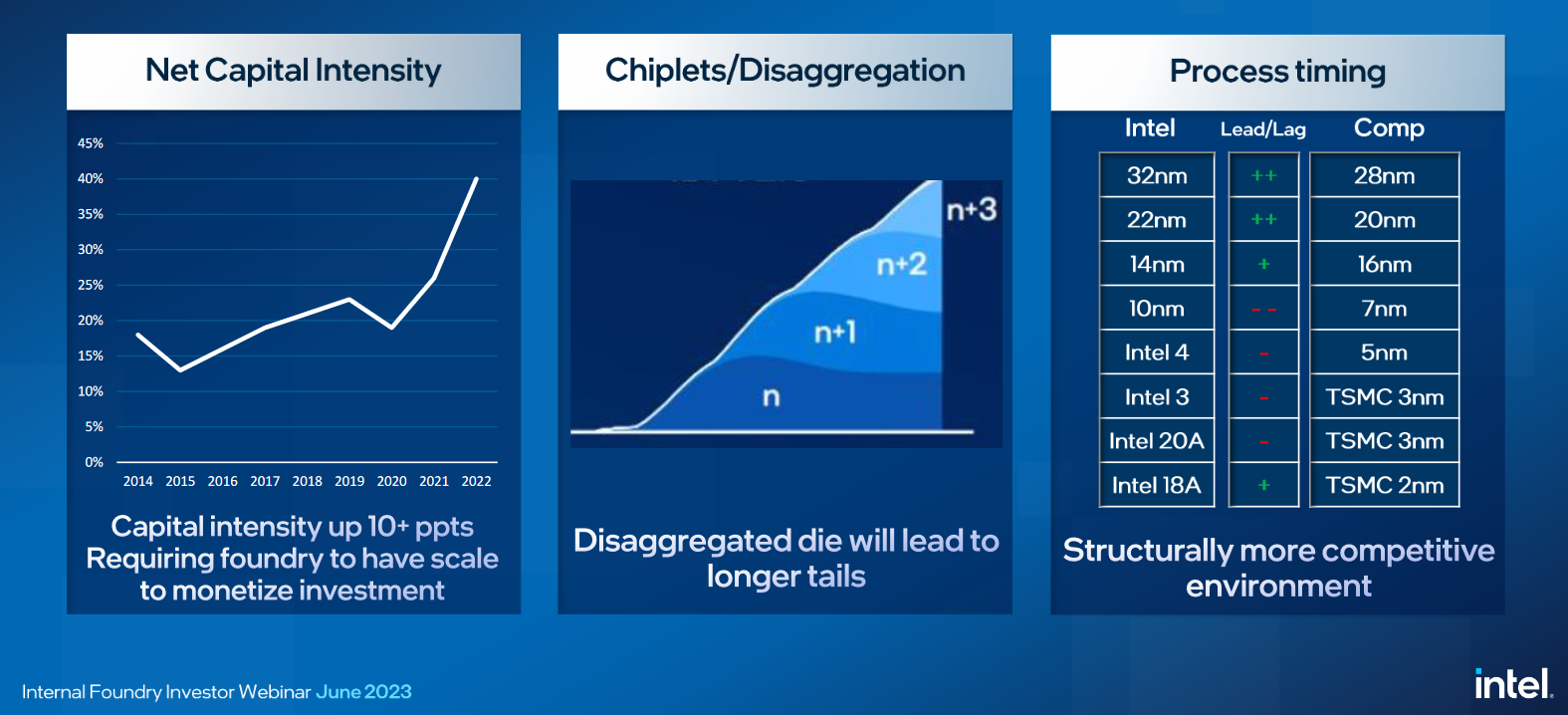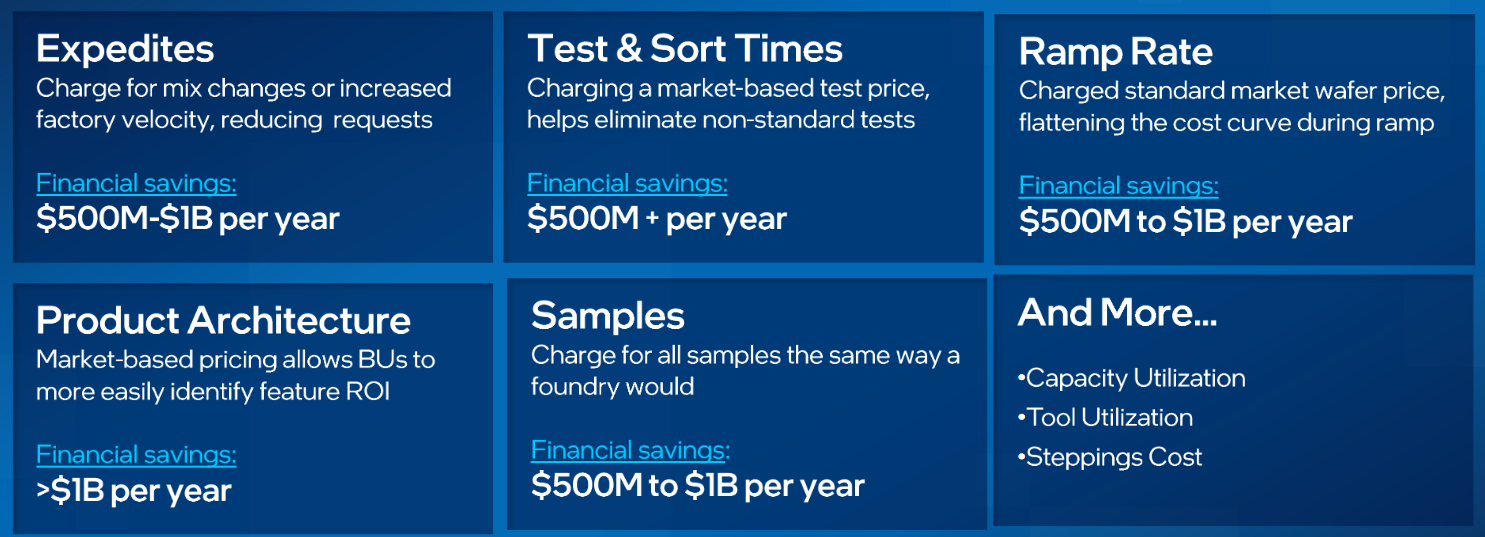Intel is combining all of its manufacturing groups – including its new Intel Foundry Services – into a single reportable segment with its own financials, as part of a restructuring to drive $10 billion in savings by 2025.
The move will bring transparency that “exposes the true economics of the business by more directly measuring the financial performance of our teams with peers. It will also drive accountability as we harden the connection between decisions and costs,” said Intel EVP David Zinsner.
Intel's business units will now have a customer-supplier relationship with its own manufacturing business, effective Q1 2024.

The new Intel manufacturing group will be accountable to a standalone P&L for the first time, Zinsner emphasised during an investor event on June 2021. This group will include internal manufacturing, technology development, and Intel Foundry Services; a new segment making chips for third-party customers in a model more like Taiwan’s TSMC.
Intel described its foundry model as “key to the company’s overarching IDM 2.0 strategy — with the aim to return margins to their historic range and ambitions to serve a far wider variety of chip customers worldwide.”
The internal foundry model created by this broader manufacturing segment independence will incentivise Intel business groups to work more efficiently, executives said: "For example, 'expedited' wafers that business units decide to move through Intel’s manufacturing process are costly and reduce factory efficiency. Going forward, this service charge will be borne by the business units, and it’s expected that it will reduce the number of expedites to be on par with the competition," Intel said on June 21.

The shift is part of a broader ongoing restructuring at Intel, the manufacturing side of which it calls integrated device manufacturing or "IDM 2.0", and comes amid pressure on its business from multiple directions, including the custom ARM chips being created by the likes of Apple and AWS; a slump in PC sales; hot competition in the data centre CPU space from the likes of AMD, and growing demand for GPUs and other bespoke accelerators where Intel is struggling.
The decision comes after Intel reported a $2.8 billion loss in its last reported financial quarter as revenues slumped. CEO Pat Gelsinger said on April 27 during that earnings call: “The semiconductor industry is cyclical by nature, we continue to accelerate our transformation.”
The semiconductor market will be worth more than $1 trillion by 2030. Combined with the need for globally balanced and resilient supply chains and the foundry market expected to be roughly 200 billion by 2030, we are well positioned to capitalize on multiple vectors of growth” he added.
To those challenging Intel and indeed x86 on the shape of things to come, Gelsinger told analysts in April that "ARM, RISC-V, x86... we'll be participating across all of those, whether that's through foundry or through our product offerings. [But] I've continued to view that if we are doing a great job with our road map that the role of ARM in the data center will be limited. Particularly with the product line that we've laid now laid out with Sierra Forest, Clearwater Forest, and strong products coming thereafter, we believe that we now deliver power performance TCO benefit at x86. Migrating software stacks in the data center is a lot of work; if I give customers an easy path with x86 and E-core solutions with superior TCO alternatives, that will do very well.
"That's our primary play. At the same time, our foundry play will be come-one, come-all. We will manufacture any of the RISC-V, ARM, x86, and GPU alternatives for the industry through our superior capabilities in our foundry offerings over time. We view this as an industry play of great significance and one that we're committed to competing for leadership wafers across every architecture, every segment of the industry..."








